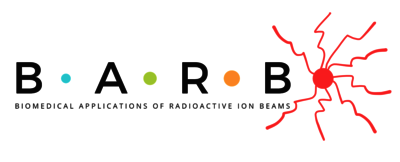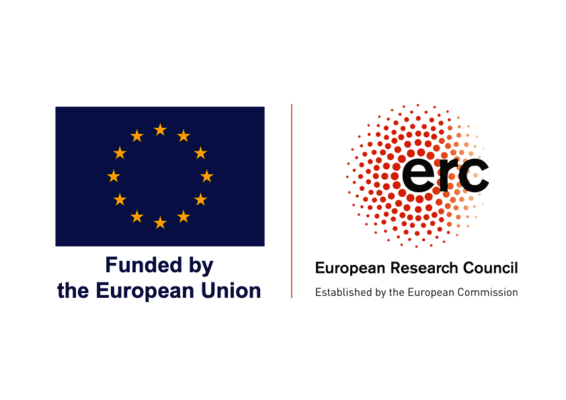ERC BARB

The BARB project (Biomedical Applications of Radioactive ion Beams) is an ERC Advanced Grant submitted in the 2019 call and funded in 2020. The idea of BARB is to use radioactive (ß+-emitting) ion beams for simultaneous treatment and beam visualization of solid tumors.
The current problem:
Charged particle therapy (CPT) is rapidly growing and is potentially the most effective and precise radiotherapy technique. However, range uncertainty and poor image guidance limit its application. Radioactive ion beams (RIB) are the ideal tool for in vivo beam visualization, but their intensity is insufficient for therapeutic applications.
BARB’s objectives:
BARB will develop a new method for the use of radioactive (ß+-emitters) ion beams in CPT. The new idea is to use the same beam for treatment and PET online imaging. A successful BARB project would:
- tweak RIB production at accelerators using the in-flight method;
- augment the accuracy of image-guided CPT;
- expand the indications for treatments using CPT to new tumors and noncancer diseases;
- provide new projectiles for CPT with potential large benefits for patients;
- consolidate Europe’s leadership in innovation for image-guided CPT.
The innovative idea:
Only with the advent of the new FAIR accelerator in Darmstadt will we be able to produce high-intensity beams of short-lived isotopes of carbon and oxygen nuclei. These beams will be used for examination of simultaneous treatment and online imaging in the ongoing FAIR-phase-0. We will visualize the beam with a new sensor, a gamma-PET hybrid detector that allows signal accumulation in all phases of the spill delivery from the synchrotron.
Significance:
We are aiming to simultaneous beam delivery and visualization with an unprecedented range accuracy <0.5 mm with our new method compared to the currently insufficient 2-5 mm. This will also allow treatment of small metastases, tumors close to critical structures, and ablation of small targets for treatment of non-cancer diseases, such as heart arrhythmia. In addition to the impact in radiotherapy, BARB will upgrade the methods of light ion radioactive beam production to reach unprecedented intensities and outstrip any previous PET detector for online beam monitoring.

People
Principal Investigator Associate Partner, co-PI

Prof. Marco Durante, Ph.D. |
|

Prof. Dr. Katia Parodi, Ph.D.
Medical Physics Department, Head
Ludwig-Maximilians-Universität München (LMU Munich)
Am Coulombwall 1 (R127)
85748 Garching b. München, Germany
Katia.Parodi(at)lmu.de















